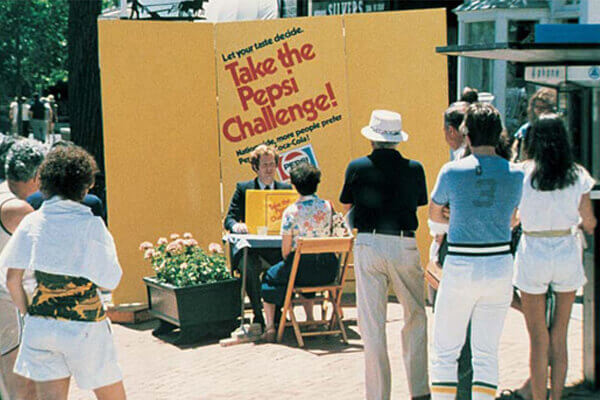[et_pb_section fb_built=”1″ admin_label=”section” _builder_version=”4.16″ global_colors_info=”{}” theme_builder_area=”post_content”][et_pb_row admin_label=”row” _builder_version=”4.16″ background_size=”initial” background_position=”top_left” background_repeat=”repeat” global_colors_info=”{}” theme_builder_area=”post_content”][et_pb_column type=”4_4″ _builder_version=”4.16″ custom_padding=”|||” global_colors_info=”{}” custom_padding__hover=”|||” theme_builder_area=”post_content”][et_pb_text admin_label=”Text” _builder_version=”4.17.6″ background_size=”initial” background_position=”top_left” background_repeat=”repeat” hover_enabled=”0″ global_colors_info=”{}” theme_builder_area=”post_content” text_font_size=”18px” text_line_height=”1.6em” text_text_color=”#000000″ max_width=”700px” module_alignment=”center” sticky_enabled=”0″]
Subway came out with an ad campaign that wants us to take a break from the burger. It shows Ronald McDonald “taking a break” by the pool drinking a soda out of a Subway cup with a sandwich resting on the table next to him. I’m not going to lie, this is kind of disappointing coming from the company that created the Five Dollar Footlong campaign.
Chris Carroll, the Chief Advertising Officer at Subway said, “Consumers just get in habits and they go and have burgers. Every now and then you might want to consider breaking the habit and going to Subway. That’s really the whole strategy. We’re reminding them they have choices.”
I always thought that Subway was the “healthy alternative” in the fast food game – wasn’t that their value proposition? It’s interesting that Subway decided to go after McDonalds without using their healthier option as the position.
Comparative Advertising Pros and Cons
Comparing your product to another or using a competitor’s brand in your advertising – i.e. Subway using McDonalds, Samsung using Apple, Pepsi using Coke – has its pros and cons.
If you’re a startup and need to establish yourself in the market it’s good to go after the big guys – it helps you generate some buzz. Remember the Pepsi Challenge in the 80s? That campaign worked and it actually helped Pepsi gain market share on Coke.

But once you are established in the market – like Pepsi is today – you need to start moving away from direct comparisons because all that does is strengthen the brands of the competition.
Coke ads always focus on the brand. Drinking soda is “a shared experience that’s supposed to remind you of friendship, family, cute polar bears, and other fuzzy associations.” And that’s what Coke promotes. Apple is the same way. They would never mention Samsung in an ad. Apple is too busy controlling the conversation with their customers – pushing lifestyle not comparisons.
How to Compare Your Product or Brand to Your Competitor
Comparative advertising is a common tactic for most companies – bidding on the branded keywords of your competitors is something that happens everyday. So if you must do it then here are a few ways to make that happen and do it right.
- Create an audience on Facebook that targets your competitor’s brand name, product, interests etc.
- Download and target your competitor’s Twitter followers.
- Make sure your brand’s video ad shows up before a competitor’s YouTube video.
- Target your competitor’s brand in Gmail Ads so when a customer receives their newsletter your ad shows up.
- Create custom affinity audiences on GDN that target’s your competitor’s website.
The Quick Guide to Bidding on a Competitor’s Brand
In paid search (Google Ads), having a campaign that bids specifically on the competition’s brand terms is almost as common as being let down by your favorite sports team. Unlike sports, bidding on your competition’s branded terms shouldn’t let you down…so here’s a quick guide to bidding on the competition.
First we start with the pros of bidding on a competitor’s brand:
- On a CPC basis, brand terms are less expensive than bidding on top keywords.
- People who might have not known you exist now see your brand next to another that they are already are engaging with.
After you start with the pros you always have to follow up with the cons:
- As soon as your ad appears next to your competitor’s when they search their brand name they’ll know exactly what you are doing. It’ll likely make them mad and now the game has officially started.
- Your click-thru-rates (CTR) will be lower because when someone searches for a brand they are likely trying to go to that website. Low CTR can have a negative effect on your ad account.
Now before you get started dominating your competitors brand on paid search you need to make sure you’re doing it right.
According to Google’s Trademark Rules, you need to avoid:
- The use of a trademarked brand name in your ad text
- The use of trademarked brand names in your display URLs
Google reserves the right to remove any use of trademarks on your ads in Google following a complaint. Here’s a direct quote from Google:
“If a trademark owner submits a complaint to Google about the use of their trademark in AdWords ads, we will review it and may enforce certain restrictions on use of the trademark. The following policies apply to trademarks used in text ads on the Search Network…however, Google may remove specific ads on the Google Network in response to trademark owner complaints.”
For a complete guide to bidding on your competitor’s brand on Google Ads click here.
[/et_pb_text][/et_pb_column][/et_pb_row][/et_pb_section]

